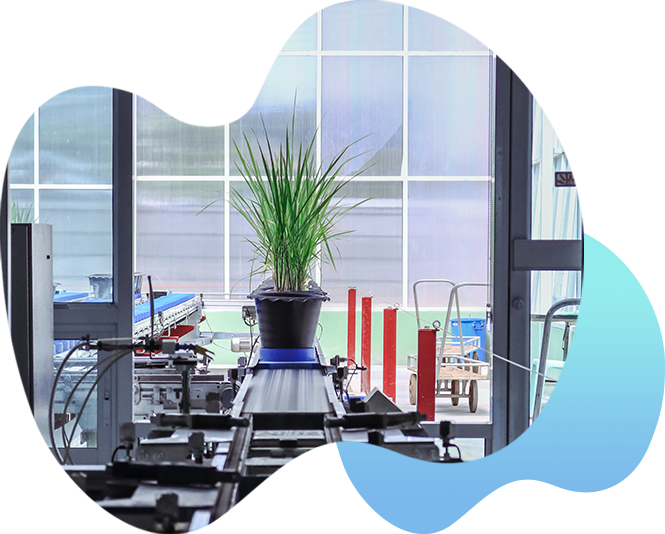Plant Phenomics Facility
Agricultural sector for food consumption in the 21st century encounters a challenge since the world population is growing while arable farmland becomes limited. Whereas a 2.4% annual increment rate of crop production is required to meet world consumption, only a 1.3% increase in crop yield can be achieved. In addition, climate change and disease outbreaks, not to mention lack of workforce and nutrient insufficiency, usually augment this underproduction. On the other hand, consumers urge sustainable agriculture which appears to be a solution to protect the environment with no compromisation on productivity. In the old days, the agricultural sector considerably relies on using fertilizers and machines to increase yields. With the advent of digital technology, plant growers are capable of not only monitoring the state of crops but also defining exactly the amount of fertilizers or water they have to apply for optimal productivity. The exploitation of agritechology also extends to improve accuracy and reduce experimental period for plant breeding.
Crop phenotypes are extremely complicated because they are a combination of genotypes (G) and environment (E). This interaction influences not only the Crop phenotypes are extremely complicated because they are a combination of genotypes (G) and environment (E). This interaction influences not only the growth and development process of crops observed in structural traits, e.g. stem, flower, root, or seed, but also the plant functionality reflected as the response subject to environmental changes, for instance, phytochemical properties, and disease resistance. Conventionally, to determine crop performance, agronomists and farmers have necessarily to hinge on destructive characterization methods, which are not widely available either, to determine the crop performance.

In addition, the variability of the environment (E) dramatically affects plants’ requirements, e.g. nutrient content, water, light, soil/air humidity, and optimal cultivation temperature. Also, biotic parameters such as infectious diseases and arthropod pests must be controlled to allow an accurate investigation of the plant phenotypes. These factors cause inefficiency and inaccuracy in the selection of potential varieties. Therefore, it is crucial to apply the advanced characterization tool, so-called high-throughput phenotyping technology capable of screening and selecting suitable genes in a faster and more accurate manner, to develop optimized crops.
“Plant Phenomics Center” at the Eastern Economic Corridor of Innovation (EECi) is, thus, established as a prime infrastructure that allows an in-depth study of plant agronomy, both physiology, and productivity, in response to the environmental conditions. The center offers crop phenomics research ranging from phenotypic data collection using various sensors to phenomics analyses. The facility is fully equipped with high-throughput phenotyping and image analysis systems, consisting of Chlorophyll Fluorescence Units, Thermal Imaging Units, and Hyperspectral Imaging Units, which enable a thorough investigation of both aboveground and underground parts of plants. The center employs an automatic conveyor control for watering and weighing under a controlled environment and can monitor the growth of plants in a non-destructive manner up to 2.5 meters in height, and 1.5 meters in width.
The physiological and biological findings will not only provide a suitable selection of potential varieties but also enhance the effectiveness in the management and control of plant growth. The high-throughput phenotyping system will accelerate the selection of plant varieties that yield high productivity and good attributes to withstand restricted environmental conditions. It also offers the capability to select varieties that produce high content of specific nutrients from herbs highly demanded in the market; thereby creating a unique selling proposition for plants as high-value functional ingredients in cosmeceuticals, nutraceuticals, to name but a few. Likewise, comprehension in plant phenotyping also benefits open-field farming in which the precision agriculture system is integrated to monitor and forecast the environment and assist in fertilizing and watering according to plant needs.
The High-throughput phenotyping platform is one of the key enabling technologies to not only ensure the food security of the nation but also fulfill the high world demand of functional ingredients from herbs myriadly available in Thailand. The Plant Phenomics Center at EECi will play a strategic part to support Thailand’s transition towards sustainable agriculture and, thus, ensure the well-being of farmers.



